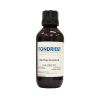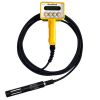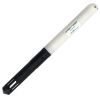Bright Dyes Rhodamine WT Dye
Features
- Preferred, high strength formulations for medium to large scale visual and fluoremetric studies
- NSF Standard 60 Certification for use in or around potable water sources
- Also used to calibrate many YSI 6-Series and EXO optical sensors
- Expedited repair and warranty service
- Lifetime technical support
- More
Overview
Bright Dyes act as a coloring label on each drop of water. As that water or liquid travels, it can be identified at each point on its travel until it reaches extreme dilution. It may be detected visually, by ultraviolet light and by appropriate fluorometric equipment. The dyes selectively absorb light in the visible range of the spectrum. They are fluorescent because, upon absorbing light, they instantly emit light at a longer wavelength than the light absorbed. This emitted (fluorescent) light goes out in all directions. Most common fluorescent tracers are compounds that absorb green light and emit red fluorescent light.
Absorption Resistant
FWT red dye is resistant to absorption on most suspended matter in fresh and salt water. Compared to Bright Dyes FLT Yellow/Green products, FWT Red is significantly more resistant to degradation by sunlight and, when used in fluorometry, stands out much more clearly against background fluorescence.
In The News
Spring 2025 Environmental Monitor Available Now
In the Spring 2025 edition of the Environmental Monitor, we highlight partnerships across the world and the importance of collaboration between government agencies, universities, environmental groups, local communities, and other stakeholders. From great white shark research in Cape Cod to monitoring fisheries in Lake Erie, this latest edition underscores partnerships that connect stakeholders in a watershed through environmental data. With an emphasis on data sharing, a combination of real-time and discrete sampling keeps the public and partners informed of environmental conditions. Our writers also sought out science professionals dedicated to working with peers within and outside of the environmental sector.
Read MoreMonitoring Mariculture in the Gulf of Alaska
The mariculture industry in the Gulf of Alaska has been steadily growing in recent years, guided by ongoing research to help refine farm location and cultivation practices. A subset of aquaculture, mariculture focuses on rearing organisms in the open ocean. In Alaska, finfish farming is illegal, so most farms cultivate kelp, oysters, or a combination of the two. These small, locally operated farms started popping up in the Gulf of Alaska in the early 1990s, when shellfish farming first became legal. Kelp farming did not begin to catch on in the state until 2016. Many of the coastal areas that have grown interested in mariculture are historically commercial fishing communities.
Read MoreSupplying Seattle’s Drinking Water: Using Data Buoys to Monitor the Cedar River Municipal Watershed
Providing clean, safe, and reliable drinking water for the 1.6 million people in the greater Seattle area is a top priority for Seattle Public Utilities (SPU). With limited water supplies, SPU dedicates considerable resources to maintain its watersheds and mountain reservoirs. About 70 percent of Seattle Water comes from the Cedar River Municipal Watershed , and the other 30 percent comes from the South Fork Tolt River Watershed . [caption id="attachment_39574" align="alignnone" width="940"] Data buoy in Chester Morse Lake . (Credit: Kevin Johnson / Seattle Public Utilities) [/caption] Jamie Thompson, a fisheries biologist at SPU, monitors aquatic ecosystems centered on fish listed under the U.S. Endangered Species Act (ESA).
Read More














